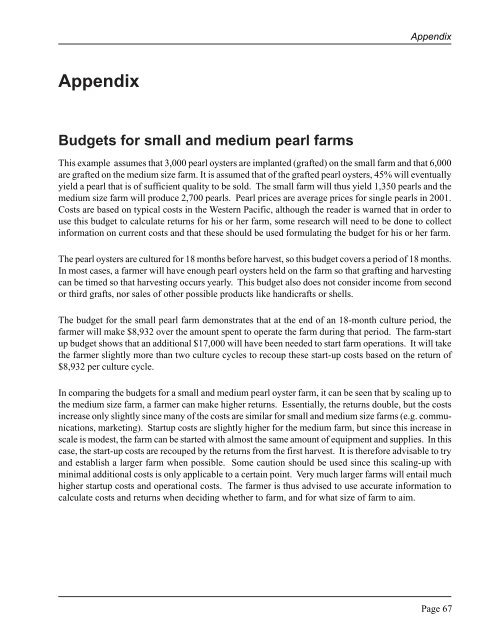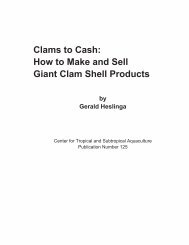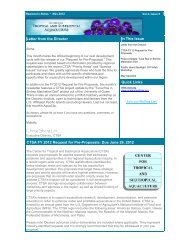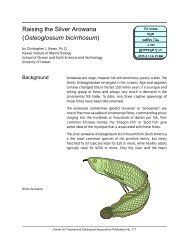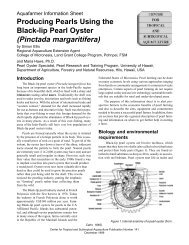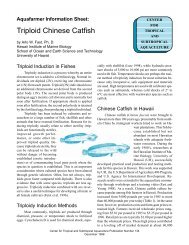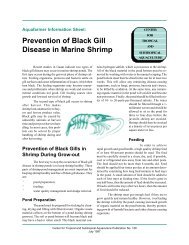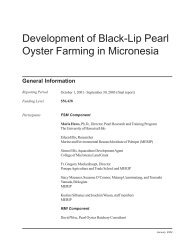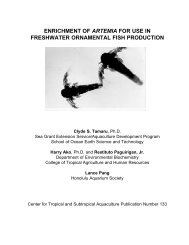The Basic Methods of Pearl Farming: A Layman's Manual - CTSA
The Basic Methods of Pearl Farming: A Layman's Manual - CTSA
The Basic Methods of Pearl Farming: A Layman's Manual - CTSA
Create successful ePaper yourself
Turn your PDF publications into a flip-book with our unique Google optimized e-Paper software.
AppendixAppendixBudgets for small and medium pearl farmsThis example assumes that 3,000 pearl oysters are implanted (grafted) on the small farm and that 6,000are grafted on the medium size farm. It is assumed that <strong>of</strong> the grafted pearl oysters, 45% will eventuallyyield a pearl that is <strong>of</strong> sufficient quality to be sold. <strong>The</strong> small farm will thus yield 1,350 pearls and themedium size farm will produce 2,700 pearls. <strong>Pearl</strong> prices are average prices for single pearls in 2001.Costs are based on typical costs in the Western Pacific, although the reader is warned that in order touse this budget to calculate returns for his or her farm, some research will need to be done to collectinformation on current costs and that these should be used formulating the budget for his or her farm.<strong>The</strong> pearl oysters are cultured for 18 months before harvest, so this budget covers a period <strong>of</strong> 18 months.In most cases, a farmer will have enough pearl oysters held on the farm so that grafting and harvestingcan be timed so that harvesting occurs yearly. This budget also does not consider income from secondor third grafts, nor sales <strong>of</strong> other possible products like handicrafts or shells.<strong>The</strong> budget for the small pearl farm demonstrates that at the end <strong>of</strong> an 18-month culture period, thefarmer will make $8,932 over the amount spent to operate the farm during that period. <strong>The</strong> farm-startup budget shows that an additional $17,000 will have been needed to start farm operations. It will takethe farmer slightly more than two culture cycles to recoup these start-up costs based on the return <strong>of</strong>$8,932 per culture cycle.In comparing the budgets for a small and medium pearl oyster farm, it can be seen that by scaling up tothe medium size farm, a farmer can make higher returns. Essentially, the returns double, but the costsincrease only slightly since many <strong>of</strong> the costs are similar for small and medium size farms (e.g. communications,marketing). Startup costs are slightly higher for the medium farm, but since this increase inscale is modest, the farm can be started with almost the same amount <strong>of</strong> equipment and supplies. In thiscase, the start-up costs are recouped by the returns from the first harvest. It is therefore advisable to tryand establish a larger farm when possible. Some caution should be used since this scaling-up withminimal additional costs is only applicable to a certain point. Very much larger farms will entail muchhigher startup costs and operational costs. <strong>The</strong> farmer is thus advised to use accurate information tocalculate costs and returns when deciding whether to farm, and for what size <strong>of</strong> farm to aim.Page 67


